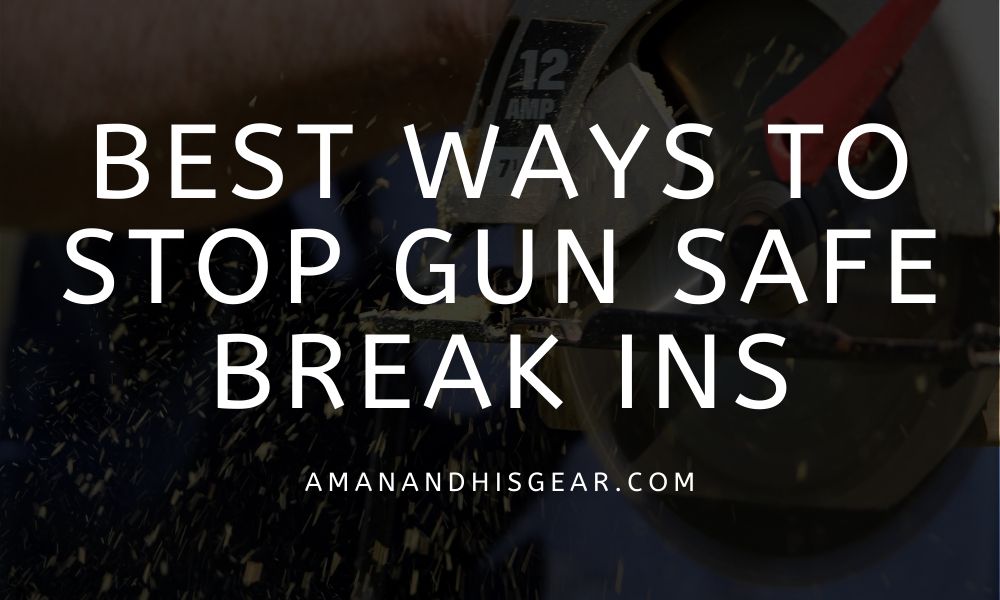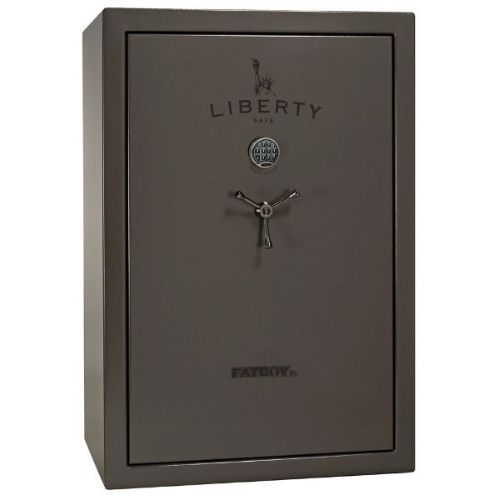We may get commissions for purchases made through links in this post. Thanks for the support! 👍
Gun safes can be broken into, it’s a matter of fact. Give someone enough time, and any gun safe can be cracked, cut into, pried open or the like.
When you purchase your gun safe, you have to realize that what you are paying for is time. The more you spend, the more time you are buying for your valuables to be safe, both in a fire, as well as a break in.

Manufacturers of these gun safes have to think about so many different ways to protect you and your belongings from theft, and you should make sure you are buying the right safe for yourself that protects you as well.
This article is meant to be a way to open buyers’ eyes to the different ways these safes can be broken into, and to be aware of the upsides and downsides of both expensive and cheap safes.
I personally do believe there is a big place for inexpensive safes on the market, but it is important that the buyer understands the risks to value ratio that they are buying.
Here are just some of the ways that thieves will try to break in, and also how you can fix the issue by looking for specific features in the gun safe you are buying.
Before I get into the specific attacks, there are two things that will help you more than any other solution you will see below. Those are the following:
- Don’t tell anyone about your safe! While the buying process may feel like buying a car in the intricacies, this one you shouldn’t tell your friends and family about. The more people that know about your safe, the more people that will tell a friend of a friend, and the more people that will know to bring specific tools to get into your safe. Just don’t tell people about you shopping for or buying a safe.
- Don’t keep your safe out in the open! Yes, I know, your new safe looks awesome, and you are proud of it! But at least don’t keep it in your living room, or in plain view of large windows. Keeping it somewhere you can enjoy it is important, agreed, but make sure before you buy the safe you have decided where you want to keep it, that you can enjoy it, but the thieves outside can’t.
Cutting open the side of the safe with a saw
I have this one as first because it is the one that not many people talk about or think about.
However SecureIt Gun Storage does a great job of showing how easily you can cut into a safe and gain access to the interior with just a $10 saw.
This mainly is done on the sides of the safe where the steel is generally the thinnest and where it is easily accessible.
There are two different ways you can get around this issue:
- Buying a gun safe with cement filling in the walls (there are a couple good options on this list) is a great way to get through this. A saw may be able to cut through steel, however once it hits the cement it dulls the blade, and the thief has to move to a different method of entry, buying you time.
- A safe with thicker steel will also achieve a similar way of fixing this. I haven’t run any tests obviously, however 10 gauge or thicker should do the trick. The thicker the steel, the longer it takes for the saw to make its way through.
- Don’t keep your safe in the garage, or at least not around your power tools. Most thieves won’t be carrying in a saw with them, so don’t keep your tools near the safe where they can easily use your own tools to gain access. Might as well just keep the key or combo on top of the safe.
- Put your safe into a closet. This makes it so only the door of the safe is available for access. This means they have to go through the thickest steel of the safe, and also the hardest to start a cut. This article here goes into how to do this!
Cutting open the safe with a torch
This is one of the options for one of those very very determined thieves.
Basically they will cut through the steel with a plasma cutter, or cutting torch and gain access to your safe. This is not nearly as common, but is effective.
Must like the saw method, there are a couple ways around this.
- The first, and I personally think is the coolest would be to buy a safe with a stainless steel inner steel liner. Fort Knox is known for having this as a feature. Stainless steel will dissipate heat, and makes it really hard to cut through with a torch.
- Again, much like the saw attack, don’t keep your own tools around the safe. If you have a cutting torch near your safe, it would be obvious for anyone skilled or not, to at least try it. Just don’t do it.
Drilling open the safe
Drilling out a safes lock is also a common way that thieves will try to gain access to a safe.
What happens is they drill through the lock face and into the locking mechanism that is on the other side of the door steel. This breaks the lock, and allows them to gain access.
There is one great way to keep this from being achieved.
- Purchase a safe with a hard plate. This hard plate sits between the lock, and the locking mechanism, making it much more difficult to drill through. Liberty has a really cool way of doing this (learn more here on their site) where they have a ball bearing hardplate. This plate has ball bearings that will catch a bit of a drill and actually snap it, making it near impossible to use this method of entry.
Hinge Attack
A hinge attack is going to be one of the first things a thief is going to try to do to get into your safe. Basically this means cutting off the hinges, and trying to remove the door with that.
The great thing about this, is most safes can’t have this issue if they have double sided bolts on the door. This is because the bolts hang on to the inside lip of the door.
Because of this, the door can’t be removed when the hinges are removed. Nowadays, the hinges are really only there to swing the door open, not really for security.
Because of this, I actually recommend external hinges (not only because they can open wider) because why not give a thief something to attack that will waste time.
So there are only two ways to avoid this attack.
- Buy a safe with bolts on at least the two sides. It really doesn’t matter a ton if both sides are live bolts that move, just as long as they are there.
- The other way is to buy a safe with internal hinges, because you can’t cut something off that isn’t visibly. However as stated before… not really necessary in my mind.
Attacking the gun safe handle
This is a pretty simple one, the thief will try to jam the handle and force it open by brute strength. What basically happens, is it will break the internal locking mechanism and allow them to gain access to the safe.
Nowadays there aren’t that many safes for sale that I really susceptible to this attack, however here are a couple ways to combat that.
- Make sure the safe you are buying has a clutch on the inside that slips. This style of handle, if enough pressure is applied in the incorrect way it will slip out and the handle will spin completely freely. If this happens, you just turn the handle the other way around and it will go back into place. This will keep the thief from damaging your safe.
Attacking the safe with an axe
I personally don’t think this attack is the most reasonable one to worry too much about. However it is worth mentioning.
Basically the thief will use an axe they find and try to get through the steel. I’m not so sure if I were trying to break into the safe that I would use this method.
There is really one way to handle this issue.
- Thicker steel, just get a safe with thicker steel and you won’t have to worry too much about this. When you have more steel, it will just bounce off and maybe dent it.
Prying open the safe
Prying open a safe one of the most common ones I see people talking about online, the pry attack.
This is where you will get 1 or more people with varying sizes of pry bars, prying at the seam of the door trying to get the bolts to fail. This is actually one of the tests that Underwriters Laboratory use in their ratings.
So how do we get around this one?
- Buy a safe with corner bolts. The corners of a door are where the door is most likely to be affected by this, as they are the most likely to bend during this attack. Corner bolts like what Fort Knox and Browning offer will completely get rid of this possibility, if not, will greatly reduce the risk.
- Bolting your safe to the ground (with a kit kinda like this one) will also almost completely keep this from happening. It is really difficult to get leverage on a door when it is standing up, so the easiest way to make this work is to get the safe down on its back, and attack from the top.
- If you bolt your safe to the ground, they won’t be able to tip it over. Can’t bolt your safe to the ground? Maybe try keeping the safe in a closet (here are some safes that will fit), where it is more difficult to tip it over.
- Get a safe with thicker steel, yeah I know, this is pretty much on every one, but in the end this is the best way to work against a thief.
Gun safes can be broken into, there is no way around that. However again, the more you spend the more likely they thieves will get caught before they gain access and get away.
By keeping an eye on all the different ways they can get in, and how to stop it (or slow them down) you will be able to be ready for any kind of attack.
One final point on this, is you can also buy safes that have warranties that include attempted break in. I don’t believe these will cover the items on the inside, however they will help repair or replace your safe if thief’s end up damaging your safe.
A couple that come to mind are Liberty, Fort Knox, Champion Safes and Browning.
